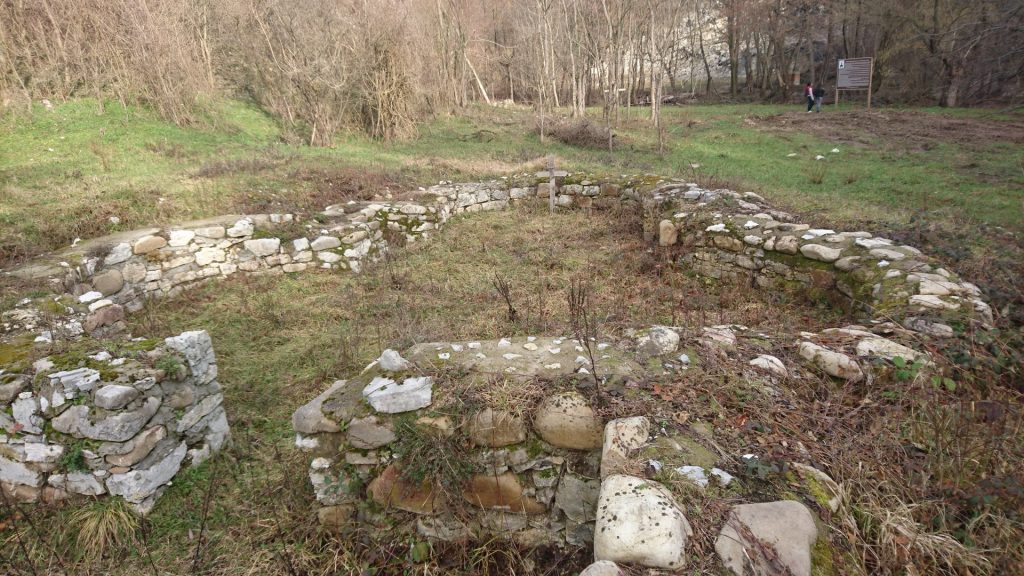The excavations carried out in 2002 on the right bank of the Sirinia River identified the ruins of the Orthodox monastery of the same name, with the “Saint Nicolae” sham, dating XII th – XVI th century.
‘’La mănăstire’’ (’’at the monastery’’), the toponym used to describe the area, the continuity in this area of the Romanian population. Historical monument, it belongs to the middle period of the Middle Ages, after design analogies to other Romanian Orthodox churches and is built in Byzantine style.
Documentary, the monastery is attested only in the Ottoman acts called ‘defter’ of 1554-1573, named ‘Sirinia Monastery, Sfantul Nicolae’ (Manastir I Sirinya, Isvei Niqola’), papers which also refer to the Romanian villages in its vicinity: Sirinia (desolated in 1554), Drencova, Berzasca and Debeli Lug.
The building foundation has a depth of 0.80 meters and a width of 1.10 meters and is composed of river stone and rock of chipped limestone caught with mortar.
The Sirinia Monastery and the neighboring villages were in the medieval fortress of Drencova (Drranco), One of the numerous Daco-Romanian castra used for defense and surveillance at the Danube, whose ruins are still seen today in the river waters, on the site of the former river port of Berzasca village.
‘’La mănăstire’’ (’’at the monastery’’), the toponym used to describe the area, the continuity in this area of the Romanian population. Historical monument, it belongs to the middle period of the Middle Ages, after design analogies to other Romanian Orthodox churches and is built in Byzantine style.
Documentary, the monastery is attested only in the Ottoman acts called ‘defter’ of 1554-1573, named ‘Sirinia Monastery, Sfantul Nicolae’ (Manastir I Sirinya, Isvei Niqola’), papers which also refer to the Romanian villages in its vicinity: Sirinia (desolated in 1554), Drencova, Berzasca and Debeli Lug.
The building foundation has a depth of 0.80 meters and a width of 1.10 meters and is composed of river stone and rock of chipped limestone caught with mortar.
The Sirinia Monastery and the neighboring villages were in the medieval fortress of Drencova (Drranco), One of the numerous Daco-Romanian castra used for defense and surveillance at the Danube, whose ruins are still seen today in the river waters, on the site of the former river port of Berzasca village.






